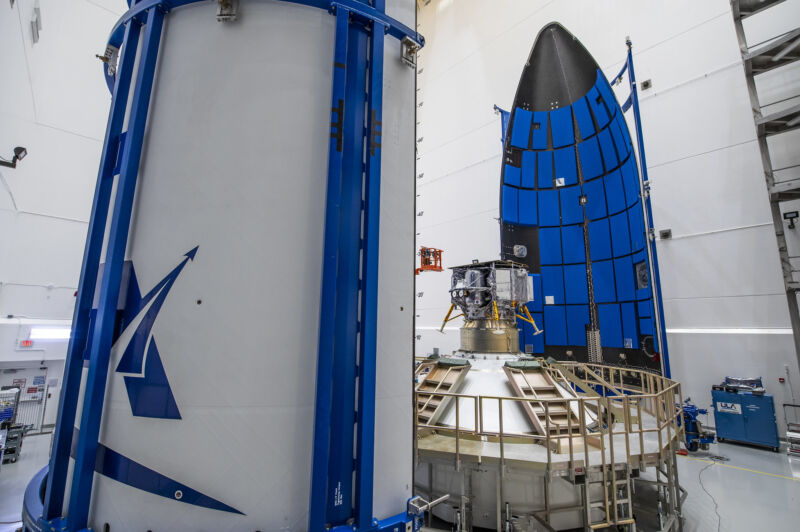The situation with Astrobotic’s lunar lander appears to be quite dire

Enlarge / Astrobotic's Peregrine lander is seen recently encapsulated inside the Vulcan rocket's payload fairing. (credit: United Launch Alliance)
On Monday morning, the new Vulcan rocket made a smashing debut, launching from Cape Canaveral Space Force Station in Florida and performing flawlessly. After 50 minutes of flight, the rocket's upper stage deployed its primary payload-the Peregrine lunar lander-into a Moon-bound trajectory. United Launch Alliance declared complete success with its new rocket.
After the deployment of the spacecraft, its developer, Pittsburgh-based Astrobotic, also said its ground controllers had successfully established contact with Peregrine. All seemed well as the spacecraft entered a highly elliptical orbit that will bring it toward the Moon in the coming weeks.
However, later on Monday morning, about six hours after liftoff, Astrobotic released an updated statement. While the vehicle's avionics systems, including the primary command and data handling unit and the thermal, propulsion, and power controllers, had all powered on and performed as expected, there was a problem.